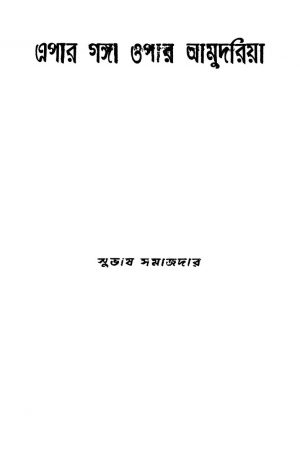For Complaints/Suggesstions related to this material, please clickHere
বই থেকে নমুনা পাঠ্য (মেশিন অনুবাদিত)
(Click to expand)of Khawrism, with the archaeological evidence of a vivacious
court-dancer of Mohenjodaro (2500 B. C.), The archaeological -
expedition in cemetries of the pastora] tribes under the
cool and bluish shade of Deodar groves on the Southern
slopes of Hindukusb, revealed a few fragments of fossils,
wearing the diamond-drilled carnelian beads, brought from
India ; statues of emperors and darkskinned armour-plated
warriors of South Indian style were found in the ruins of the
ancient palace (3rd or 4th century A. D.) of Khawrism sugges~
ting that Khorezm troops at that time included Indians.
Numerous othez discoveries by the archaeologica! expedition led
by P.S. Tolstov, Alexander Frumkin and other leading Soviet
experts of archaeology, established that this historical truth—
the Gangetic land had obviously broad ties of friendship with
the region of Amudarya and Sirdarya, since time immemorial,
A number of adventurous Budhist monks along, with the
countless number of ambitious traders, frequently crossed the
snow-covered lofty Himalayas and the Hindukush-Pamir and
traversing the vast and dreadful desert went to Central Asia
through Great Silk Road (29 B. C.) many _ thousand
years ago, Obviously they had spread their own distinctive
-cultural and religious beliefs in the land of Amudarya
(Oxus or Bakshu is also mentioned in the Vedas) and
Sirdarya, The foundations of Rusgsian-Indian relations had
perhaps been laid in the old caravan sarai, the meeting
place of the traders from various countries of the ancient
world. These caravan sarais of famous trade centres were,
nevertheless, the major information exchanges or embassies
of early days,
. Asynopsis of this book was sent to Mr Surat Mirkasymov,
‘Vice-President Soviet-Indian Friendship Society of

